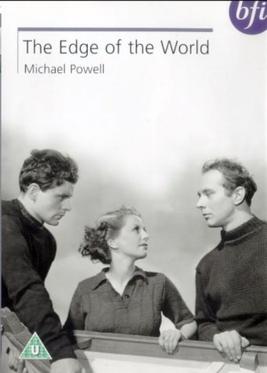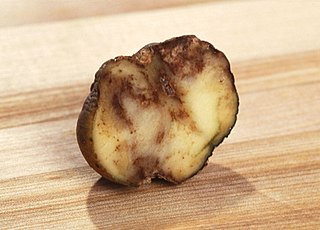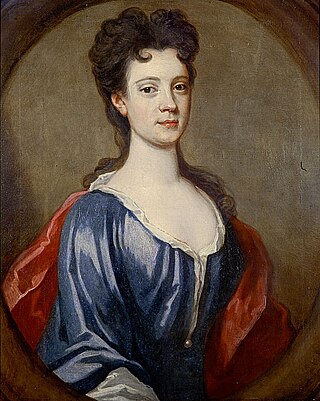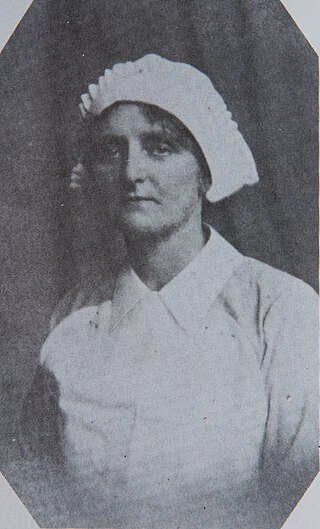Related Research Articles

St Kilda is a remote archipelago situated 35 nautical miles west-northwest of North Uist in the North Atlantic Ocean. It contains the westernmost islands of the Outer Hebrides of Scotland. The largest island is Hirta, whose sea cliffs are the highest in the United Kingdom; three other islands were also used for grazing and seabird hunting. The islands are administratively a part of the Comhairle nan Eilean Siar local authority area.
Hirta is the largest island in the St Kilda archipelago, on the western edge of Scotland. The names Hiort and Hirta have also been applied to the entire archipelago. Now without a permanent resident population, the island had nearly all of St Kilda's population of about 180 residents in the late 17th century and 112 in 1851. It was abandoned in 1930 when the last 36 remaining inhabitants were evacuated to Lochaline on the mainland.

Marco Polo was a three-masted wooden clipper ship, launched in 1851 at Saint John, New Brunswick. She was named after Venetian traveler Marco Polo. The ship carried emigrants and passengers to Australia and was the first vessel to make the round trip from Liverpool in under six months. Later in her career, the ship was used as a cargo ship before running aground off Cavendish, Prince Edward Island, in 1883.

The Edge of the World is a 1937 British film directed by Michael Powell, loosely based on the evacuation of the Scottish archipelago of St Kilda. It was Powell's first major project. The title is a reference to the expression ultima Thule, coined by Virgil.

The Highland Potato Famine was a period of 19th-century Highland and Scottish history over which the agricultural communities of the Hebrides and the western Scottish Highlands saw their potato crop repeatedly devastated by potato blight. It was part of the wider food crisis facing Northern Europe caused by potato blight during the mid-1840s, whose most famous manifestation is the Great Irish Famine, but compared with its Irish counterpart, it was much less extensive and took many fewer lives as prompt and major charitable efforts by the rest of the United Kingdom ensured relatively little starvation.

Norman McLeod, a Presbyterian minister from Scotland, led significant settlements of Highlanders in Nova Scotia and ultimately in Waipu in New Zealand.

Benjamin Boyd was a Scottish entrepreneur who became a major shipowner, banker, grazier, politician and blackbirder in the British colony of New South Wales. He was briefly a member of the Legislative Council.

Edward Micklethwaite Curr was an Australian pastoralist, author, advocate of Australian Aboriginal peoples, and squatter.

Stac an Armin, based on the proper Scottish Gaelic spelling, is a sea stack in the St Kilda archipelago. It is 196 metres (643 ft.) tall, qualifying it as a Marilyn. It is the highest sea stack in Scotland and the British Isles.
St Kilda was continuously inhabited for two millennia or more, from the Bronze Age to the 20th century.

Stac Biorach is a sea stack, 73 metres (240 ft) tall, situated in the Sound of Soay between the islands of Hirta and Soay in the St Kilda archipelago of Scotland. It lies west of the 62 metres (203 ft) high Stac Shoaigh. Regarded by the St Kildans as the most challenging of their stacks to climb, it was nonetheless an important source of food. The first written records date from the second half of the 17th century and the first recreational ascent took place in 1883. It is now part of the St Kilda World Heritage Site and in the care of the National Trust for Scotland.

The Hebrides were settled early on in the settlement of the British Isles, perhaps as early as the Mesolithic era, around 8500–8250 BC, after the climatic conditions improved enough to sustain human settlement. There are examples of structures possibly dating from up to 3000 BC, the finest example being the standing stones at Callanish, but some archaeologists date the site as Bronze Age. Little is known of the people who settled in the Hebrides but they were likely of the same Celtic stock that had settled in the rest of Scotland. Settlements at Northton, Harris, have both Beaker & Neolithic dwelling houses, the oldest in the Western Isles, attesting to the settlement.

John Sands (1826–1900) of Ormiston was a Scottish freelance journalist and artist who also had an interest in archaeology and folk customs, especially the way of life on Scottish islands. He spent almost a year on St Kilda and lived on several other remote islands.
Sir John McIntyre was a Scottish-born Australian politician and businessman. After emigrating to Australia during the Victorian gold rush, McIntyre became heavily involved in the mining industry around Bendigo in Victoria. Later as he began to rise in prominence he became involved in local politics, eventually becoming the first mayor of Bendigo, a post he held for five years before resigning. In the years following he became heavily involved in community work, serving as a territorial magistrate and children's guardian for the Bendigo district. In 1877 he was elected to the Victorian Parliament as the Member for Sandhurst. Although he later lost this seat in 1880, he re-entered parliament in 1881 after winning the seat of Maldon in a by-election. He held this seat until 1902, serving as a minister during James Patterson's premiership and as Leader of the Opposition from 1895 to 1898. In December 1903 he stood for the Australian Senate but narrowly failed to win a seat. Suffering from ill health, he died shortly afterwards.
Ewen is a male given name, most common throughout Scotland as well as Canada, due to the immigration of Scottish people. It is an anglicisation of the Scottish Gaelic name, Eòghann. It is possibly a derivative of the Pictish name, Uuen, "born of the mountain." Ewen or Ewan is also a Scottish surname, as in Clan MacEwen.

Rachel Chiesley, usually known as Lady Grange, was the wife of Lord Grange, a Scottish lawyer with Jacobite sympathies. After 25 years of marriage and nine children, the Granges separated acrimoniously. When Lady Grange produced letters that she claimed were evidence of his treasonable plottings against the Hanoverian government in London, her husband had her kidnapped in 1732. She was incarcerated in various remote locations on the western seaboard of Scotland, including the Monach Isles, Skye and St Kilda.
Joseph Anderson Panton was a Scottish-born Australian magistrate and goldfields commissioner.
Alexander Fraser was an Australian businessman and politician in colonial Victoria, a member of the Victorian Legislative Council.

The Highland and Island Emigration Society was a charitable society formed to promote and assist emigration as a solution to the Highland Potato Famine.

Williamina McIntosh Barclay MBE was a nurse who was one of the main initiators of the evacuation of the Scottish archipelago St Kilda.
References
- 1 2 3 4 5 6 7 8 9 10 Tom Steel (1975). The Life and Death of St Kilda. Fontana/Collins. ISBN 0-00-637340-2. Archived from the original on 26 September 2021. Retrieved 8 January 2020.
- 1 2 3 4 5 6 7 Eric Richards (1992). "St Kilda and Australia: Emigrants at Peril, 1852-3". The Scottish Historical Review. 71 (191/192). Edinburgh University Press: 129–155. ISSN 0036-9241. JSTOR 25530537.
- 1 2 3 4 5 6 7 8 9 10 Roberto Zanolla (5 August 2017). LAND OF BIRD-MEN - History of St Kilda. Lulu Press, Inc. pp. 90–. ISBN 978-0-244-62212-1.[ permanent dead link ]
- 1 2 3 4 5 6 Charles MacLean (1 July 2010). Island on the Edge of the World: The Story of St Kilda. Canongate Books. pp. 138–. ISBN 978-1-84767-472-2.
- 1 2 "Stories from St Kilda – National Records of Scotland". nrscotland.gov.uk. 31 May 2013. Retrieved 9 January 2020.
- 1 2 3 4 5 "Ewen Gillies". Hebrides People. 13 June 2023. Retrieved 19 December 2024.
- 1 2 3 "St Kilda 1851 census" (PDF). 31 March 2018. Retrieved 8 January 2020.
- ↑ "Population tables I, Vol. I. England and Wales. Divisions I-VII, 1851". histpop.org – Online Historical Population Reports. pp. 54–55. Retrieved 9 January 2020.
- ↑ "Statutory registers - Marriages - Search results", www.scotlandspeople.gov.uk (Note: Do not add a link to this site: the website Terms and Conditions state "You must not establish a link to our Website in any website that is not owned by you.")
- ↑ "A St Kilda Wedding - III". Carmichael Watson Project. 8 December 2009. Retrieved 8 January 2020.
- 1 2 3 Robert Connell (1887). "St. Kilda and the St. Kildians" (PDF). London: Hamilton, Adams & Co. Retrieved 8 January 2020.
- ↑ Photograph of the gravestone on "Ewen Gillies (1826-1904)". findagrave.com. Retrieved 9 January 2020.
- ↑ Bernd Rohrmann (May 2015). "St Kilda – Features & Fate" (PDF). p. 15. Retrieved 20 December 2024.